Radioactive Waste Management - Public Attitudes Survey for Scotland
This report summarises findings from a representative survey of the Scottish public that provides new insights into the perceptions and views towards radioactive waste management in Scotland.
Chapter 5: Decision making in radioactive waste management policy
This section explores the public's participation in, and influence in, decision-making at a local and national level.
5.1 Influence over decision-making
A vast majority of respondents believed that they have little to no influence over decision-making about radioactive waste disposal, both in Scotland as a whole (88%) and in their local area (93%). Most commonly, respondents reported that they have no influence over decision-making in either area (67%; 75%).
Only a very small proportion of respondents believed that they have a more than limited influence on decision-making in Scotland as a whole (11%) or their local area (7%).

Base: All (2,150)
It is worth noting that more respondents feel like they have less influence over decision-making in their local area over Scotland as a whole.
Looking more closely at those who feel they have no influence over decision making, there were some notable demographic differences in opinion (Figure 5.2). In particular, those from the most deprived neighbourhoods – SIMD 1 and 2 – were most likely to report that they have no influence over decision-making, either at a national or local level. 83% of those in SIMD 1 said they have no influence over decision-making in their local area, while 74% said they have no influence over decision-making in Scotland as a whole. In contrast, these percentages fell to 72% and 62% respectively for those in the least deprived neighbourhoods – SIMD 5.
Figure 5.2: How much influence, if any, do you feel you have over decision-making about radioactive waste disposal in: (By those who feel they have no influence over decision making only)
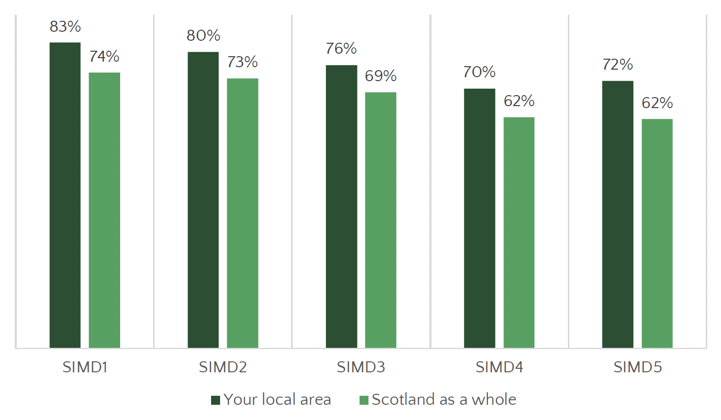
Base: Those with no influence only (Your local area (1,622), Scotland as a whole (1,446)
Those who selected that they have limited or no influence over decision-making about radioactive waste disposal in either area were asked a follow-up question, to ascertain why they feel this way. Most commonly, those who report they have limited or no influence said they feel this way because they feel that decisions are made without talking to people (61%) or that they're not given the opportunity to have an influence (48%). Two in five (39%) selected that they have limited or no influence over decision-making because they don't know how to influence decision-making.
Of those who felt like they have limited or no influence over decision-making, a small minority reported that they are not interested in influencing decision-making (7%) or that they do not have time to influence decision-making (6%).
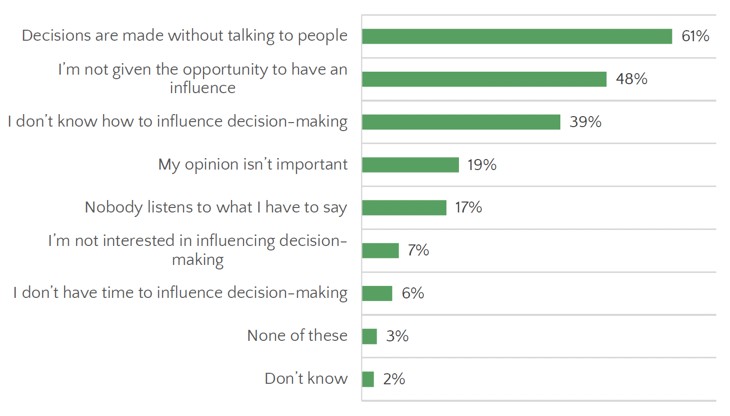
Base: Those who have limited or no influence over decision-making (2,041)
5.2 Involvement in the decision-making process
Results from the survey showed a strong interest in radioactive waste management (Figure 5.4). Overall, 70% of the respondents reported that they were interested in radioactive waste management. However, this majority was split by desire to be involved in decision-making in Scotland; one third (36%) of the respondents were interested in radioactive waste management and want to be involved in decision-making in Scotland, while another third (34%) were interested but do not want to be involved in decision-making.
In contrast, about a third (30%) were not interested in radioactive waste management. Amongst this group, more do not want to be involved in decision-making (19%), than want to be involved(11%).
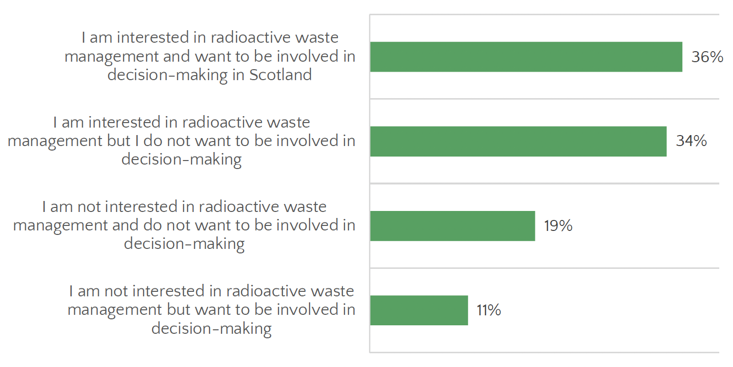
Base: All (2,144)
Key demographic differences emerged in relation to interest and desire to be involved in decision-making about managing radioactive waste (Figure 5.5). In particular, females (38%) were more likely than males (38%) to select that they are interested in radioactive waste management but do not want to be involved in decision making. In contrast, males were more likely to say they are not interested in radioactive waste management but want to be involved in decision-making (14%) than females (9%).
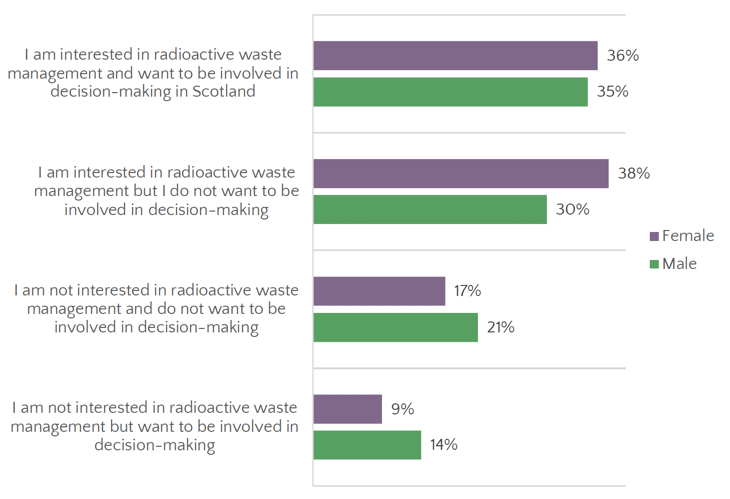
Base: Male (1,036), Female (1,109)
Interest and desire to be involved in decision-making were also related to attitudes towards radioactive waste management and the construction of management facilities (Figure 5.6). Overall, those that hold an opinion about the construction of radioactive waste management facilities in their local area, either supportive (47%) or opposing (38%), were more likely to say that they are interested in radioactive waste management and want to be involved in decision-making than those that were neutral (29%) or those that don't know (23%). Those supportive of the construction of facilities for managing radioactive waste near them were most likely to express interest and want to be involved in decision-making.

Base: Support the construction of new facilities (541), Neutral (548), Oppose the construction of new facilities (752), DK (291)
Support and opposition to new facilities is explored in section 3.3.
When considering those that should be consulted in the construction of a radioactive waste disposal site in Scotland, the respondents selected a range of actors to be involved in this process (Figure 5.7). Most commonly, four in five believed that residents of local communities (80%) and independent experts (80%) should be involved in this process.
Over two thirds believed the Scottish Government (69%), the responsible authorities (69%) and the local government (65%) should be involved in the decision-making process for new facilities in Scotland. Over half (52%) believed local non-governmental organisations should be included.
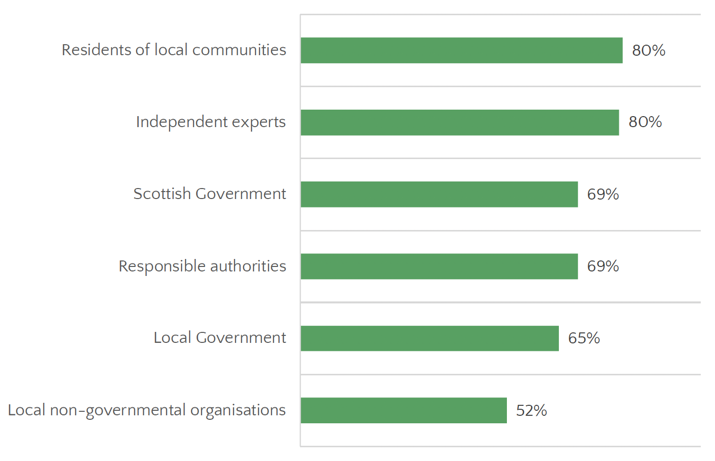
Base: All (2,160)
Contact
There is a problem
Thanks for your feedback